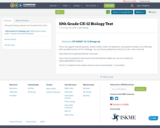
10th grade biology aligned to the standards that is free.
- Subject:
- Life Science
- Material Type:
- Full Course
- Date Added:
- 05/13/2015

10th grade biology aligned to the standards that is free.

Students will learn the research process by researching an African American Hero. They will use the Oregon Library Information System's 4 step process:1. Plan2. Find3. Create4. Present

This lesson introduces the issue of climate change, with a focus on media literacy and critical thinking and evaluation of resources.
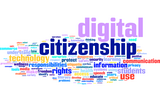
This course is about digital citizenship and its importance in using the internet. This quick and easy-to-follow module includes the four key aspects of digital citizenship and videos that contain further information on those key aspects. This resource can be utilized as a learning tool for both teachers and middle school-aged/high school-aged learners who are directly interacting with or new to how the internet works. This resource can also be utilized as a source to learn and practice digital citizenship together in the classroom.
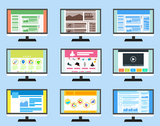

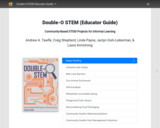
The "Double-O-STEM" (educator guide) curriculum consists of STEM problem-solving activities. The curriculum is designed around projects that empower learners to apply STEM to creatively problem-solve community issues. These include designing bike lanes, community gardens, and other exciting STEM problems.
The activities are designed for both librarians and STEM educators. The curriculum is especially aligned with the Next Generation Science Standards (NGSS (engineering; grades 3-5) and American Association of School Librarians (AASL) standards.
Please note the student version can be found using the following link:
https://www.oercommons.org/courses/double-o-stem-learner-guide
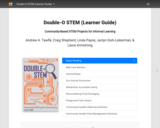
The "Double-O-STEM" (learner guide) curriculum consists of STEM problem-solving activities. The curriculum is designed around projects that empower learners to apply STEM to creatively problem-solve community issues. These include designing bike lanes, community gardens, and other exciting STEM problems.
The activities are designed for both librarians and STEM educators. The curriculum is especially aligned with the Next Generation Science Standards (NGSS (engineering; grades 3-5) and American Association of School Librarians (AASL) standards.
Please note the educator guide can be found using the following link: https://www.oercommons.org/courses/double-o-stem-educator-guide

Module OverviewAs we begin to delve into all things teaching, it's good to start with a look at what makes a teacher an effective one. Though the Art of Teaching comes more naturally to some more than others, all teachers who are effective exhibit key teaching behaviors and understand their students.

Fake News on the WebThis unit showcases lessons about Fake News, how students can learn to recongnize legitimate news stories from the fake stuff, and why recognizing the truth on the internet is so important.

In 2016, Oxford Dictionaries chose "post-truth" as the word of the year. As literacy has shifted from published hardcopy to an online landscape, it is more important than ever to engage and empower students in navigating the complicated battleground of fake news verses responsible, fact-based news. In this multi-day lesson, students will 1) examine terms associated with “fake news” and evaluate sources for their reliability and authenticity, and 2) develop a set of norms for responsible use of online news sources that spans academic and personal interaction with media.Cover image: "Fake news" by pixel2013 from Pixabay.com
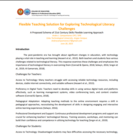
The post-pandemic era has led to changes in education, with technology playing a vital role. Teachers and students face challenges related to technological literacy. To address these challenges, investing in infrastructure, providing professional development, and developing digital skills in students are important. Blended learning, incorporating face-to-face and online activities, is a potential solution. Theories like constructivism and Bloom's Taxonomy can guide teaching. Flexible approaches such as project-based learning and the flipped classroom, along with technology tools and resources, support technology literacy. Implementing these approaches empowers students with skills for the digital age.
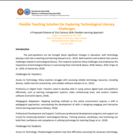
The post-pandemic era presents significant challenges in education, especially in technology integration. The Flexible Teaching Solution for Exploring Technological Literacy Challenges addresses these issues by emphasizing the importance of technological literacy and proposing effective solutions. Teachers face challenges such as limited technology access and proficiency, pedagogical adaptation, and the need for professional development. Students encounter difficulties with technology access, digital skills, self-regulation, motivation, equity, and inclusion. To overcome these challenges, investments in infrastructure, professional development, and inclusive policies are crucial. Blended learning, integrating face-to-face and online instruction, is a potential solution. Implementing the flexible teaching approach involves using various technology tools and platforms, open educational resources, and digital assessments. This dynamic learning environment fosters 21st-century skills in students.
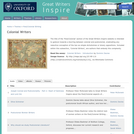
The writers included in this collection of resources present richer understandings of exactly what it means to be a "colonial", to be writing from a "colony". If it is the short stories of Rudyard Kipling, with their subtle critiques of Anglo-Indian society, the bleak ambivalence of Joseph Conrad's winding syntax, or the outright anti-imperial critiques of Olive Schreiner, these writers configure a space that can be considered at least postcolonial, if not anti-colonial, into their fiction.
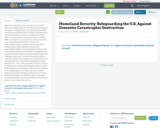
What is homeland security and why do we need it? What was unique about the 9/11 attacks that prompted the largest reorganization of the Federal government since the end of World War II? What is the difference between homeland security and national security? Why is critical infrastructure protection so critical? Why is emergency management an essential mission area within homeland security? What is the relationship between homeland security and DoD, National Guard, FBI, and State and Local law enforcement? Explore these questions and the events that made homeland security what it is today. Find out why homeland security is an unprecedented historical challenge requiring an unprecedented government response. Review the homeland security mission areas and understand not only what is being done but also why. Discover “who’s who and what do they do” within the Department of Homeland Security and the greater Homeland Security Enterprise. This book provides the most comprehensive overview and most concise resource for understanding homeland security today. Within these pages you will find insight to the most pressing challenges of the 21st century confronting the nation, your community, and you.
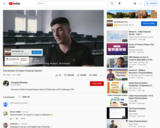
Overview of Indian Financial System, Role of IFS,Structure of IFS ,Challenge of IFS

This collection of lessons represent adapted and remixed instructional content for teaching media literacy and specifically civic online reasoning through distance learning. These lessons take students through the steps necessary to source online content, verify evidence presented, and corroborate claims with other sources.
The original lesson plans are the work of Stanford History Education Group, licensed under CC 4.0. Please refer to the full text lesson plans at Stanford History Education Group’s, Civic Online Reasoning Curriculum for specifics regarding background, research findings, and additional curriculum for teaching media literacy in the twenty-first century.
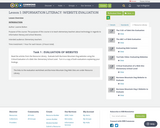
INTRODUCTIONAuthor: Leanne BoltonPurpose of the course: The purpose of this course is to teach elementary teachers about technology in regards to information literacy and school libraries. Intended audience: Elementary teachersTime investment: 1 hour for each lesson. (3 hours total)

Durante este proyecto, los estudiantes tendrán la oportunidad de investigar, experimentar, diseñar y colaborar en la creación de soluciones sustentables que aborden problemas reales relacionados con el medio ambiente. A través de actividades prácticas, reflexión crítica y diálogo constructivo, esperamos despertar su pasión por la sustentabilidad y nutrir su compromiso con el cuidado de nuestra casa común.